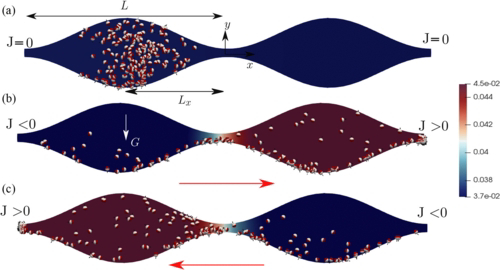Translate
giovedì 24 aprile 2025
# gst: stochastic surfing turbulent vorticity.
martedì 31 dicembre 2024
# gst: stochastic adaptation, stochastic resonance.
venerdì 11 agosto 2023
# gst: stochastic resonance mediated by optimal noise level values; transport of colloidal particles induced by substrate concentration oscillations.
mercoledì 9 settembre 2020
# gst: to reach detectability of a weak signal, they add background noise
lunedì 26 agosto 2019
# gst: the hypothesis to optimize multiplicative noise to enhance a signal-to-noise ratio
AA << study simple integrate-and-fire type models with multiplicative noise and consider the transmission of a weak and slow signal, >>
<< The specific question of interest is whether and how the state-dependence of the noise can be optimized with respect to information transmission >>
<< also in a biophysically more relevant situation, multiplicative noise can enhance the signal-to-noise ratio (..) results shed light on a so far unexplored aspect of stochastic signal transmission in neural systems. >>
Jonathan Bauermann Benjamin Lindner. Multiplicative noise is beneficial for the transmission of sensory signals in simple neuron models. Biosystems. Volume 178, Apr 2019, Pages 25-31. doi: 10.1016/ j.biosystems.2019.02.002
https://www.sciencedirect.com/science/article/pii/S0303264718303861
